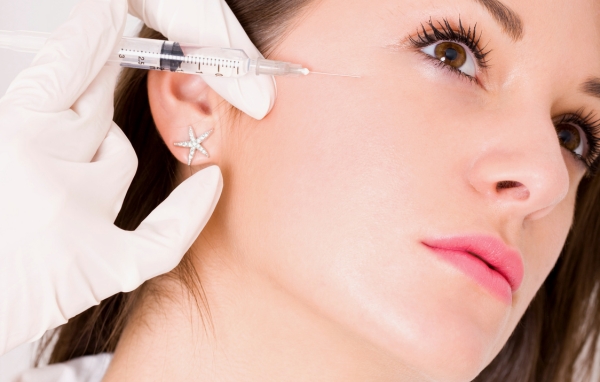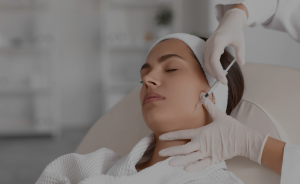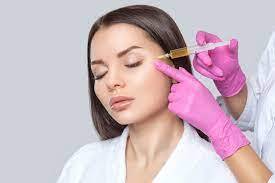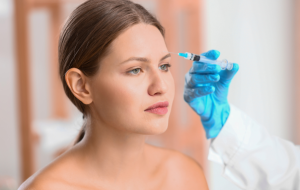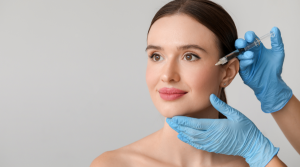Sweating is a natural process that helps our bodies regulate body temperature, but for some people, sweating goes far beyond what’s necessary. Excessive sweating, known as hyperhidrosis, can be distressing and uncomfortable. It often affects the underarms, hands, feet, and face, disrupting daily life and reducing self-confidence. At Beauty Aesthetics in Toronto, we offer botulinum toxin for sweating, a proven and effective treatment for severe primary axillary hyperhidrosis and other types of excessive sweating.
In this comprehensive guide, we’ll explain how Botulinum Toxin injections treat excessive sweating, what to expect during the procedure, and the long-term benefits of Botox-based hyperhidrosis treatment for managing overactive sweat glands.
Understanding Hyperhidrosis and Its Impact
What Is Hyperhidrosis?
Hyperhidrosis is characterized by excessive sweating beyond the body’s need to cool itself. This condition can be broken down into two main types:
- Primary focal hyperhidrosis: This form of hyperhidrosis is typically localized to certain areas, such as the underarms, hands, feet, or face, and is not caused by any underlying medical condition. It is thought to result from overactive nerves that signal the sweat glands to produce more sweat than necessary.
- Secondary hyperhidrosis: This type of hyperhidrosis is often a result of an underlying medical condition, such as hormonal imbalances, thyroid issues, infections, or as a side effect of certain medications. It can cause excess sweating over the body rather than confined to specific areas.
For individuals with primary hyperhidrosis, Botox injections can be a life-changing treatment, reducing excessive sweating and improving quality of life.
The Impact of Excessive Sweating
Excessive sweating can significantly impact both physical comfort and emotional well-being. Primary focal hyperhidrosis can cause noticeable sweating, even in cool temperatures or when a person is at rest. This can lead to:
- Embarrassment in social and professional settings: People with hyperhidrosis often feel self-conscious about visible sweat stains or excessive underarm sweating, which can lead to social withdrawal or anxiety.
- Clothing limitations: Those who sweat excessively may avoid wearing certain fabrics or colors for fear of visible sweat patches.
- Discomfort: Constant dampness from overactive sweat glands can cause skin irritation and unpleasant dampness throughout the day.
For these reasons, many patients seek effective solutions to medical conditions like Botox treatment to regain control over their bodies and their lives.
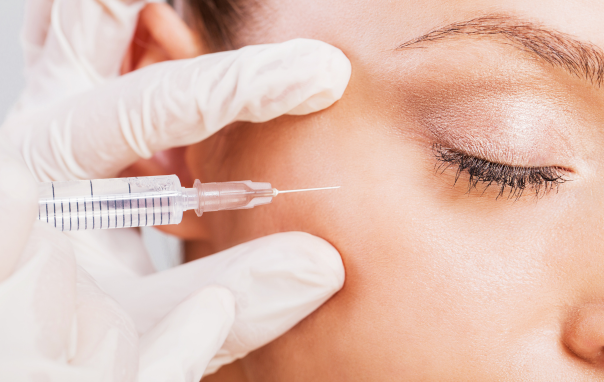
Botox for Sweating: How It Works
What Is Botox and How Does It Reduce Sweating?
Botox, or onabotulinumtoxinA, is a purified form of the botulinum toxin commonly used to treat facial wrinkles. It is also an FDA-approved treatment for severe primary axillary hyperhidrosis and other forms of focal hyperhidrosis.
Botox injections block the chemical signals from the nervous system that stimulate the sweat glands. Specifically, Botox inhibits the release of acetylcholine, a neurotransmitter that tells the sweat glands to produce sweat. Botox effectively reduces sweat production in the treated areas by blocking this signal.
How Effective Is Botox for Treating Excessive Sweating?
Clinical studies have shown that Botox injections can reduce excessive sweating by up to 80% to 90% in treated areas. Patients typically experience a significant reduction in sweating within days of receiving the treatment, with full effects taking up to two weeks to become noticeable.
Botox is particularly effective for treating excessive underarm sweating, but it can also be used on other areas of the body, such as: skin
- Palms
- Feet
- Forehead
- Face
Botox for Hyperhidrosis: What to Expect During Treatment
The process of treating excessive sweating with Botox is relatively straightforward and minimally invasive. Here’s what you can expect during your Botox appointment at Beauty Aesthetics in Toronto.
Consultation and Assessment
Before receiving Botox injections, you will meet with one of our experienced dermatologists or medical professionals for a thorough consultation. During this session, your healthcare provider will assess your sweating symptoms, take a detailed medical history, and determine whether you have primary hyperhidrosis or another underlying condition that may be causing your excessive sweating.
Suppose Botox is deemed appropriate for your condition. In that case, your own doctor’s office will explain the treatment process and set expectations for results, including the number of areas to be treated and potential side effects.
The Procedure: How Botox Injections Work
On the day of your Botox treatment, the areas of the body where you’re experiencing excessive sweating will be cleaned and prepped. In some cases, a numbing agent or ice pack may be applied to the injection sites to minimize discomfort during the procedure, though most patients report that the pain is mild and short-lived.
A fine needle is used to inject Botox into the sweat glands in the treatment area. The injections are administered in a grid pattern to ensure even distribution and optimal coverage. Axillary hyperhidrosis (underarm sweating) usually involves 10 to 15 injections per underarm. The entire process typically takes 30 to 45 minutes.
Aftercare and Recovery
One of the major advantages of Botox for sweating is that it requires little to no downtime. You can return to your normal activities immediately after the procedure. However, it’s advisable to avoid strenuous exercise, hot baths, or saunas for 24 to 48 hours following the injections to prevent irritation at the injection site.
When Will You See Results?
Botox injections begin to work within a few days, with patients typically noticing a reduction in sweating about three to five days after treatment. Full results are usually visible within 10 to 14 days. The effects of Botox can last anywhere from four to six months, after which time the sweat glands will gradually regain their ability to produce sweat.
How Long Does Botox for Sweating Last?
Botox treatment for hyperhidrosis relieves excessive perspiration for an average of six months for most patients. The results may sometimes last longer, particularly with repeated treatments. To maintain dryness, most patients must receive Botox injections two to three times per year.

Benefits of Botox for Excessive Sweating
Botox offers numerous benefits for those who sweat excessively, particularly individuals with primary focal hyperhidrosis. Here are some of the key advantages:
1. Significant Reduction in Sweating
Botox injections can reduce sweat production in treated areas by up to 90%, allowing patients to feel dry and comfortable throughout the day. This can dramatically improve your quality of life, freeing you from the embarrassment and discomfort of constant sweating.
2. Non-Surgical, Minimally Invasive Treatment
Unlike more invasive treatments for hyperhidrosis, such as surgery to remove or destroy sweat glands, Botox is a minimally invasive procedure that requires no incisions or significant downtime. The treatment in-office takes less than an hour, allowing you to immediately return to your daily routine.
3. Long-lasting Results
Although Botox treatment for sweating is temporary, the results can last several months before repeat treatments are necessary. This makes it an excellent option for individuals who need consistent, long-term relief from excessive sweating.
4. Safe and FDA-Approved
FDA-approved Botox has been extensively evaluated for safety and effectiveness since it treats extreme primary axillary hyperhidrosis. When administered by a qualified medical professional, the risks of serious side effects are very low.
5. Improves Confidence and Comfort
For individuals who experience excessive sweating, the emotional and psychological benefits of Botox can be profound. Patients report feeling more confident in social and professional settings, as they no longer have to worry about visible sweat stains, damp clothing, or unpleasant body odor.
Are There Any Risks or Side Effects?
Although Botox injections are usually safe and well-tolerated, some possible adverse effects should be known about. These include:
- Mild pain or discomfort at the injection site
- Temporary muscle weakness in the treated area (particularly in the hands or feet)
- Redness, bruising, or swelling
- Flu-like symptoms in rare cases
Most side effects are mild and temporary, resolving within a few days of the procedure. It’s important to note that Botox only works in the area where it is injected, so there is no systemic effect on your body’s ability to regulate body temperature.
In rare instances, patients may experience compensatory sweating, when sweat production increases in untreated areas of the body to compensate for the reduction in sweat in the treated area. However, this is typically mild and does not affect the overall success of the treatment.
Other Treatments for Excessive Sweating
While Botox is one of the most effective treatments for hyperhidrosis, it is not the only option. Depending on the severity and treatment of hyperhidrosis, your condition and your personal preferences, your doctor may recommend alternative treatment options, such as:
- Prescription-strength antiperspirants: Stronger than over-the-counter options, these antiperspirants can help reduce excess sweating, particularly in the underarms.
- Oral medications: Certain oral medications, such as anticholinergics, can reduce sweat production, but they may cause side effects like dry mouth and blurred vision.
- MiraDry: This noninvasive treatment uses microwave technology to permanently destroy sweat glands in the underarms. It is typically more expensive than Botox but offers long-lasting results.
- Surgical options: In severe cases, surgery to remove or destroy sweat glands (such as endoscopic thoracic sympathectomy) may be considered, though this is typically a last resort due to the risks involved.
What to Expect After Treatment
After your Botox injections, you can expect a dramatic reduction in sweating within the treated areas. Most patients feel more confident and comfortable in social, professional, and personal situations as they no longer worry about excessive perspiration interfering with their daily activities.
To ensure optimal results, it’s essential to follow any post-treatment instructions provided by your healthcare provider. If you have any concerns or questions after the procedure, attend your follow-up appointment to discuss them with your doctor.
Is Botox Right for You?
Botox for sweating is an excellent option for many patients with severe primary axillary hyperhidrosis or focal hyperhidrosis in other body areas. However, consulting with a qualified medical professional is essential to determine whether Botox is the right treatment for your condition. At Beauty Aesthetics in Toronto, our experienced professionals will assess your condition, discuss your treatment options, and develop a personalized treatment plan to help you achieve lasting relief from excessive sweating.
Conclusion: Stay Dry and Confident with Botox for Sweating at Beauty Aesthetics
Living with hyperhidrosis can be frustrating and embarrassing, but you don’t have to let excessive sweating control your life. Botox injections offer a safe, effective, and minimally invasive solution to help you manage overactive sweat glands and regain confidence.
At Beauty Aesthetics in Toronto, our expert team is dedicated to helping you achieve the best possible results from your Botox treatment. Whether you’re dealing with excessive underarm sweating, facial sweating, or sweating in other various body parts or areas, we’re here to help you feel dry, comfortable, and confident every day.

